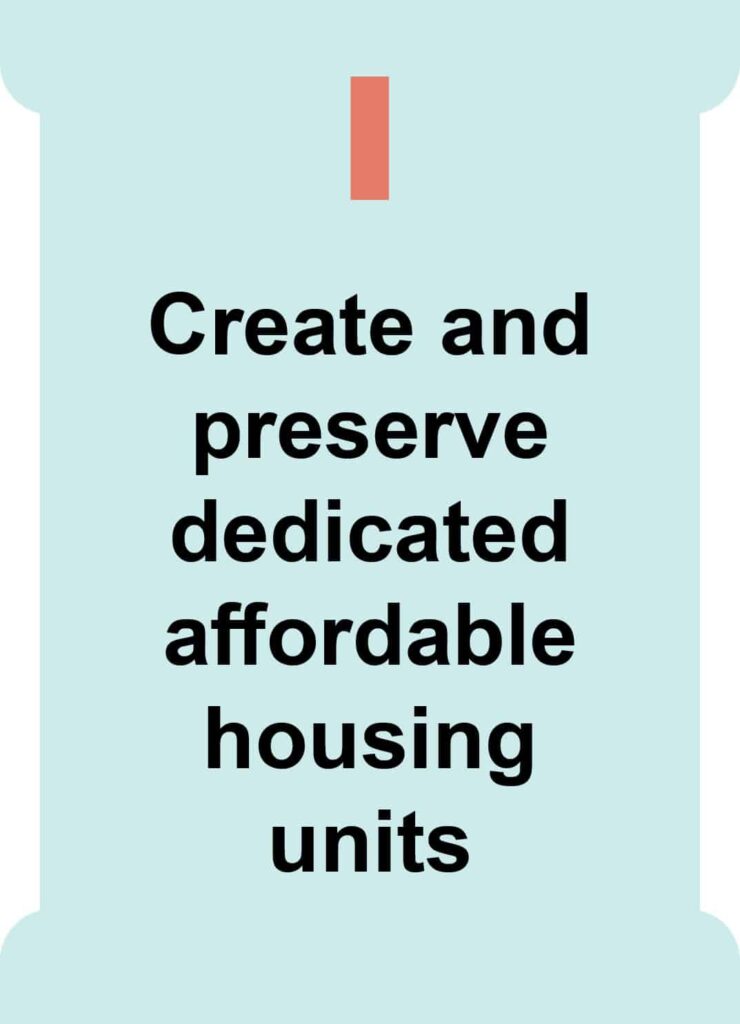3.1 Pillar I
Pillar I - Create and Preserve Dedicated Affordable Housing Units
The first pillar of the Policy Framework focuses on creating and preserving dedicated affordable housing units. These are housing units that come with legal restrictions on the rents that can be charged, the price at which the homes may be sold, and/or the incomes of the households that will occupy the units. Dedicated affordable housing units generally are designed to serve households that cannot afford to rent or purchase unsubsidized housing produced by the private market. The federal government generally defines housing as affordable when it consumes no more than 30 percent of a household’s income, and many localities have adopted a similar definition. Different ways to define and measure housing affordability are discussed in Part 1 of the Core Concepts training.
Pillar I, Create and Preserve Dedicated Affordable Housing Units, includes policies within seven subcategories, which are described below.

Policy Subcategories Under Pillar I:
- Establishing incentives or requirements for affordable housing
- Generating revenue for affordable housing
- Supporting affordable housing through subsidies
- Preserving existing affordable housing
- Expanding availability of affordable housing in resource-rich areas
- Creating durable, affordable homeownership opportunities
- Facilitating acquisition or identification of land for affordable housing
1. Establishing incentives or requirements for affordable housing
2. Generating revenue for affordable housing
3. Supporting affordable housing through subsidies
4. Preserving existing affordable housing
5. Expanding the availability of affordable housing in resource-rich areas
These policies help preserve and develop dedicated affordable housing units in resource-rich areas, such as low-poverty areas and areas with high-performing schools. These policies apply the same tools discussed elsewhere in this Pillar to create or preserve housing in resource-rich areas.
To learn more about a sample of policies within this subcategory, match up the examples below with the correct definition by first clicking on a policy and then clicking on the box where you think it should go. Do this for each of the policies, and then check your results.
6. Creating durable, affordable homeownership opportunities
7. Facilitating acquisition or identification of land for affordable housing
- Land Banks These public authorities or nonprofits acquire, hold, manage, and sometimes redevelop property to return it to productive use and meet community goals, like increasing affordable housing and stabilizing property values. They are most common in localities with relatively low or declining housing costs and a sizeable inventory of tax-delinquent properties. For more information, read this brief on land banks.
- Use of Publicly Owned Property for Affordable Housing Localities can use this strategy to help ensure an adequate supply of lower-cost homes in areas with high land costs and limited development opportunities. Typically, a local government makes property it owns available at no (or a reduced) cost to developers who commit to specific affordability requirements. For more information, read this brief on the use of publicly owned property for affordable housing.
Click on the link below to view a complete list of policies under Pillar I, with links to briefs describing each policy in detail.